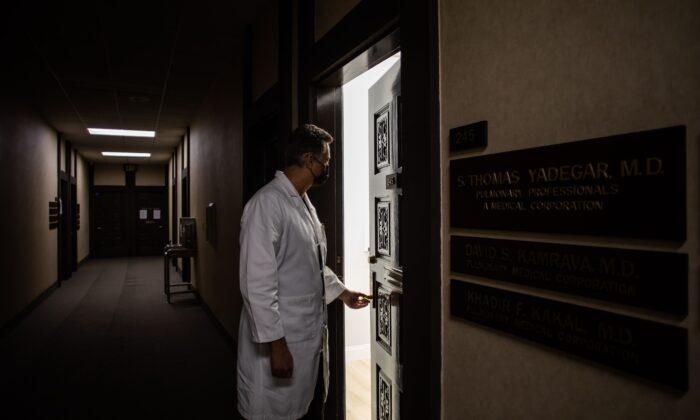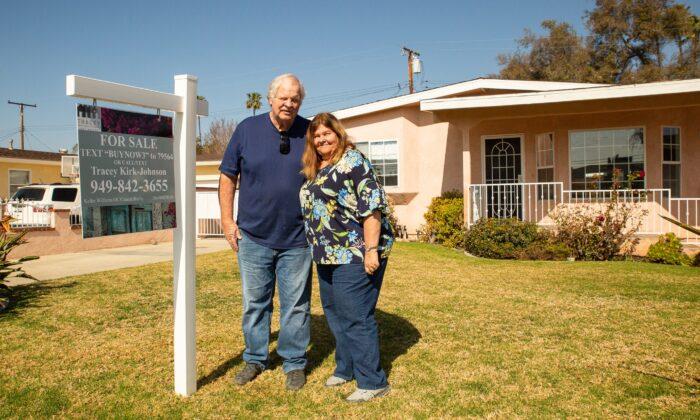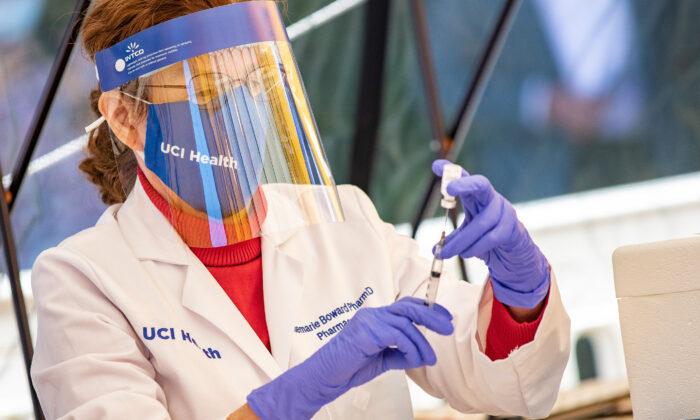As emergency rooms throughout Orange County, California, struggle with a surge in COVID-19 hospitalizations, some medical professionals worry that the worst is yet to come.
“There is typically a two-week lag between ‘spreader’ events and hospitalizations, so we are still seeing the impact from the Thanksgiving holiday,” Adam Blackstone, spokesperson for the Hospital Association of Southern California, told The Epoch Times by email. “Our greatest fears may be realized if traveling and gatherings that took place during the December holidays result in a ‘surge upon a surge.’ This will mean capacity will be further impacted with little respite for weary health care workers and all other hospital staff.”
Dr. James Keany of Providence Mission Hospital in Mission Viejo told The Epoch Times that it’s hard for him to imagine “other surges” while the current wave continues moving in an upward direction.
“It’s just a question of when will we hit the other end of the curve?” Keany said Jan. 5.
“This is different from normal business operations. You really look at [the hospital’s] past patterns, and you try and address the situation in an almost wartime mentality. You have to be proactive and have a lot of contingency plans at your fingertips.”
Keany said his hospital takes a serious look at any new ideas to find solutions to combat limited space and stressed staff. Those ideas that come into fruition are “all pro-active maneuvers to try and stay out of a crisis mode,” he said.
“I get emails and phone calls every day that I’m off, to work extra shifts, and sometimes to even work at other hospitals in our network,” one nurse told the paper. “The hospitals are full and bursting at the seams and don’t have enough staff to care for all these patients.”
Orange County recorded 1,376 cases of the Chinese Communist Party virus on Jan. 5, and no new deaths. Intensive care units remained at zero percent capacity.
The pandemic’s latest surge is occurring at a critical time when hospital workers are physically and mentally drained, Blackstone told The Epoch Times.
“Our hospitals and frontline health care workers are stretched to the limit, working tirelessly and selflessly for nearly a year to care for those battling COVID-19,” he said.
“There is no more precious resource in this battle against COVID-19 than our health care workers—those critical care nurses, doctors and respiratory therapists that are needed at the bedside,” Blackstone said. “Our hospitals are doing all that they can to provide much-needed relief to their teams, but the reality is that our hospitals are in ‘all hands on deck’ mode given that we’re experiencing a nationwide shortage of nurses during the most critical time of the pandemic.”
HASC has created a ‘Care for the Caregiver’ program to provide information and resources to help hospitals and their employees stay safe, healthy, and feel connected. In addition, HASC has hosted webinars to offer solutions to combat burnout, both on a personal and organizational level, he said.
Blackstone echoes what many health care professionals have been saying recently: It’s critical that all residents adhere to the safety guidance of our public health officials.
“We know this is hard for everyone. It’s hard for businesses; it’s hard for their employees; it’s hard for nurses and doctors and hospital support staff,” he said. “Our hospitals implore all of us to do our part: social distancing, limiting our gatherings, wearing masks, and respecting the guidance of our public health leaders.
“By doing so, you are saving lives, and from the perspective of hospitals, you are helping our teams be there for their families as well.”




